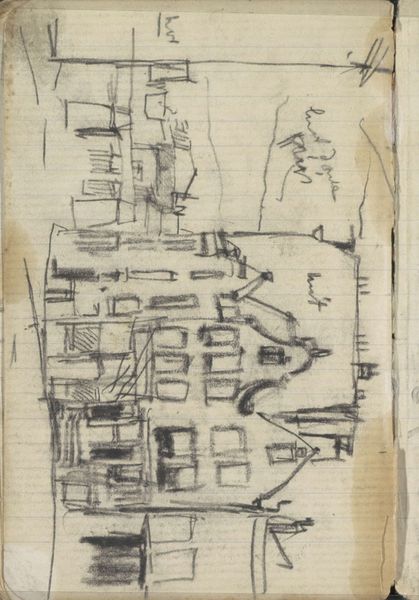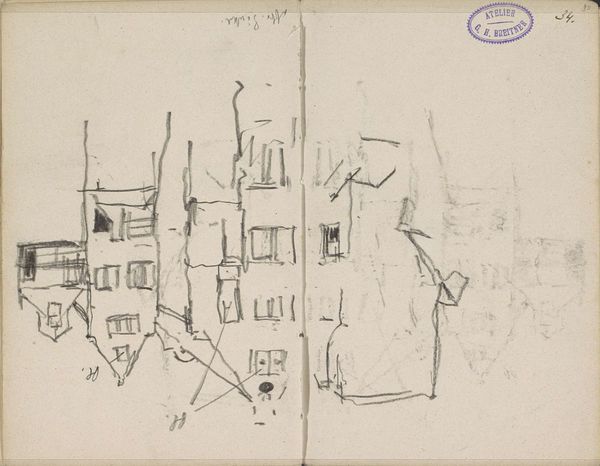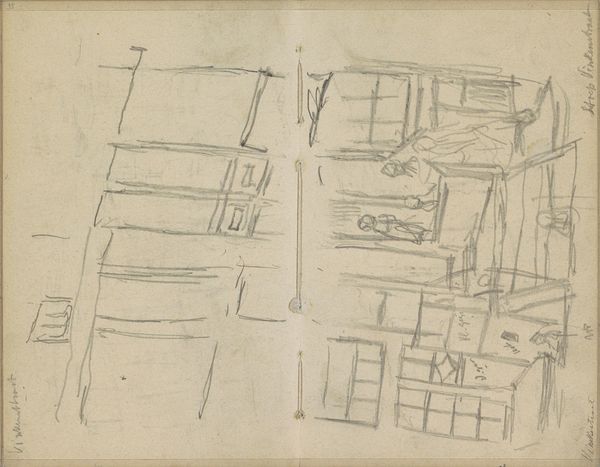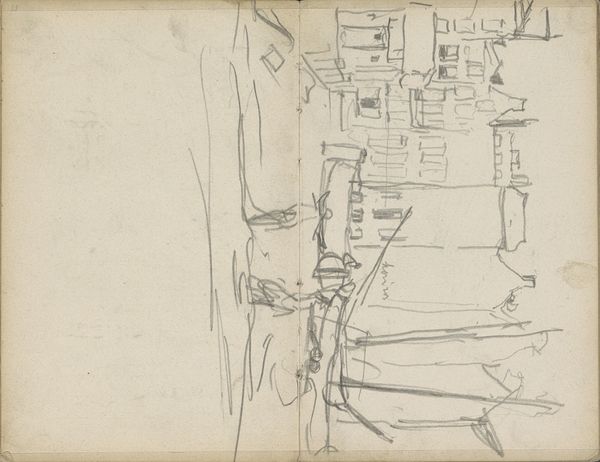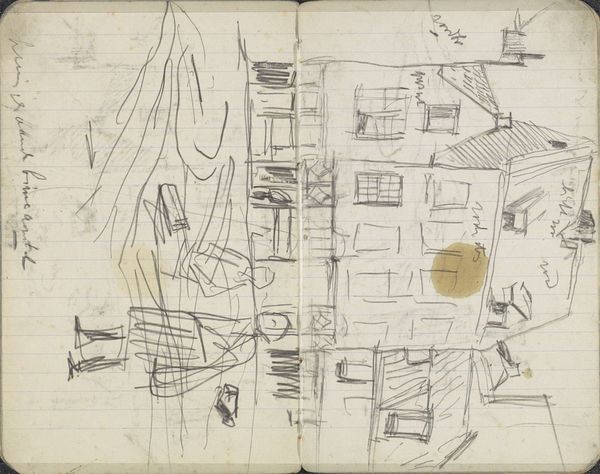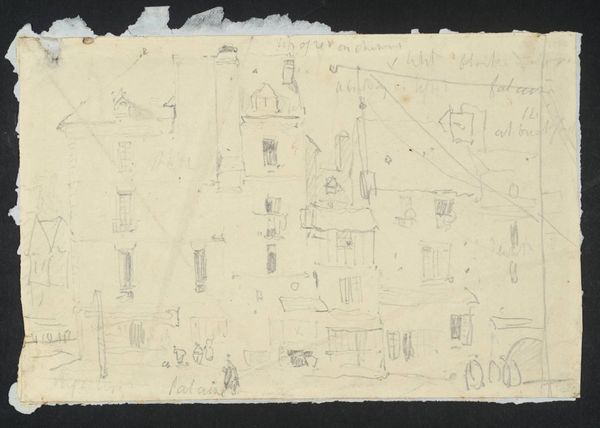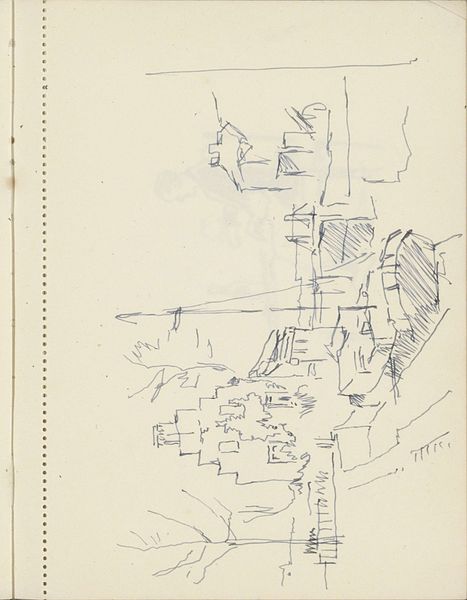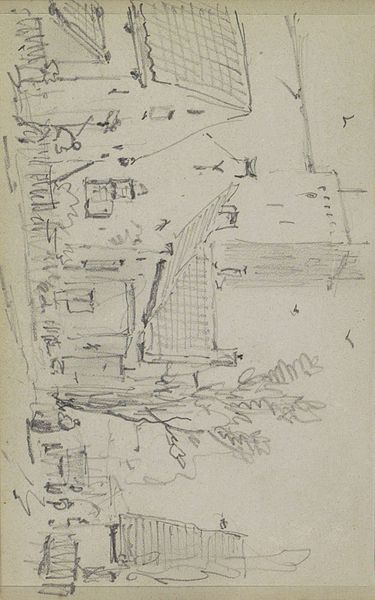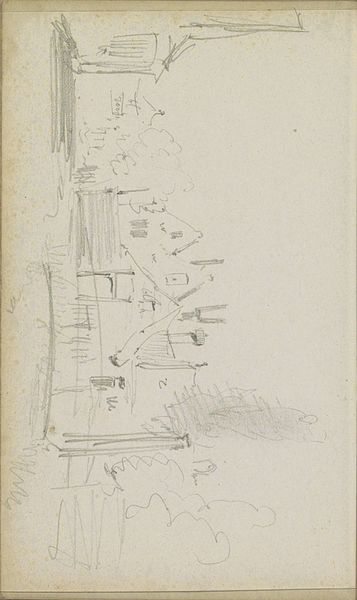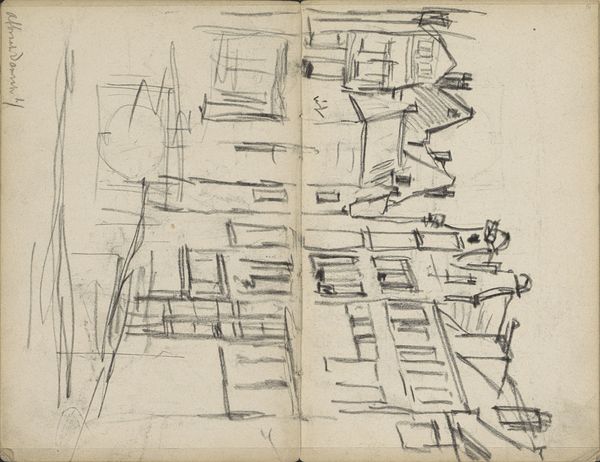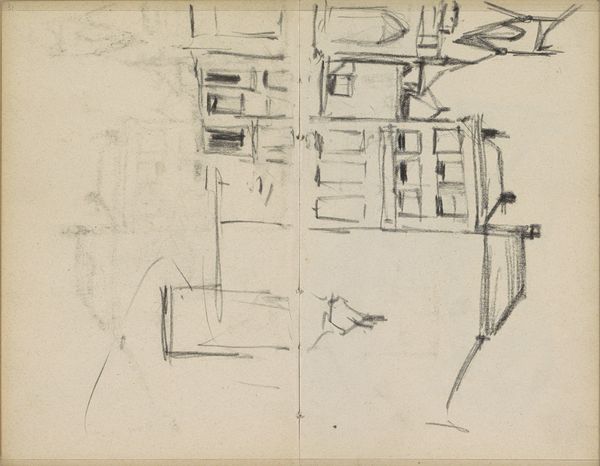
Copyright: Rijks Museum: Open Domain
Editor: Here we have "View of the Groenendaal in Rotterdam," a graphite drawing by Willem Witsen from around 1897. It’s so…sparse. Stark. Like a quick sketch, almost an unfinished thought. I wonder, what kind of story does this image tell from a historical perspective? Curator: That feeling of incompleteness is key, actually. Consider the time: the late 19th century. Industrialization was rapidly changing cities like Rotterdam. What purpose might this "unfinished" aesthetic serve when portraying an urban landscape? Editor: Perhaps to capture the feeling of constant change and the disruption of old ways? The impermanence of things? Curator: Precisely! The impressionistic style further emphasizes this, prioritizing atmosphere over precise detail. It challenges the idealized images of the city often promoted by civic leaders at the time. How do you think the choice of graphite as a medium contributes to this effect? Editor: Because it feels more immediate, less formal than painting, perhaps even critical? This looks almost like documentation... Curator: That’s a fascinating connection. Was Witsen simply capturing the scene before it disappeared? Or do you see a deliberate attempt to portray the urban landscape as impacted by new industries or class structures? It does not give the grandeur of older art forms or the precision of modern photography. It stands apart. Editor: That's true. I was mostly just reacting to the looseness of the drawing, but it represents the culture around it. Seeing it this way gives a new dimension of thought to what is seemingly an old sketch of a landscape. Curator: It shows how art functions, even unintentionally, to create a public role in how a time or a landscape or a people are observed. This is what it gives to us to learn from and for, hopefully, centuries to come.
Comments
No comments
Be the first to comment and join the conversation on the ultimate creative platform.
